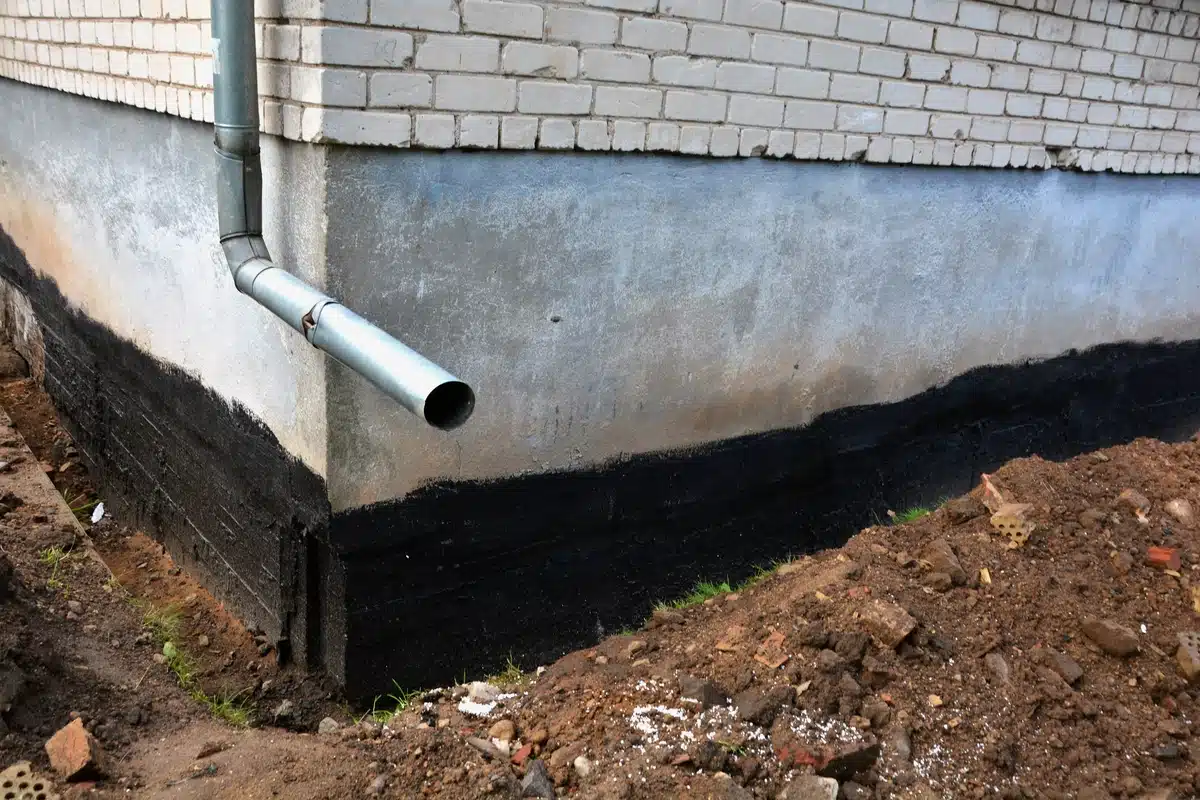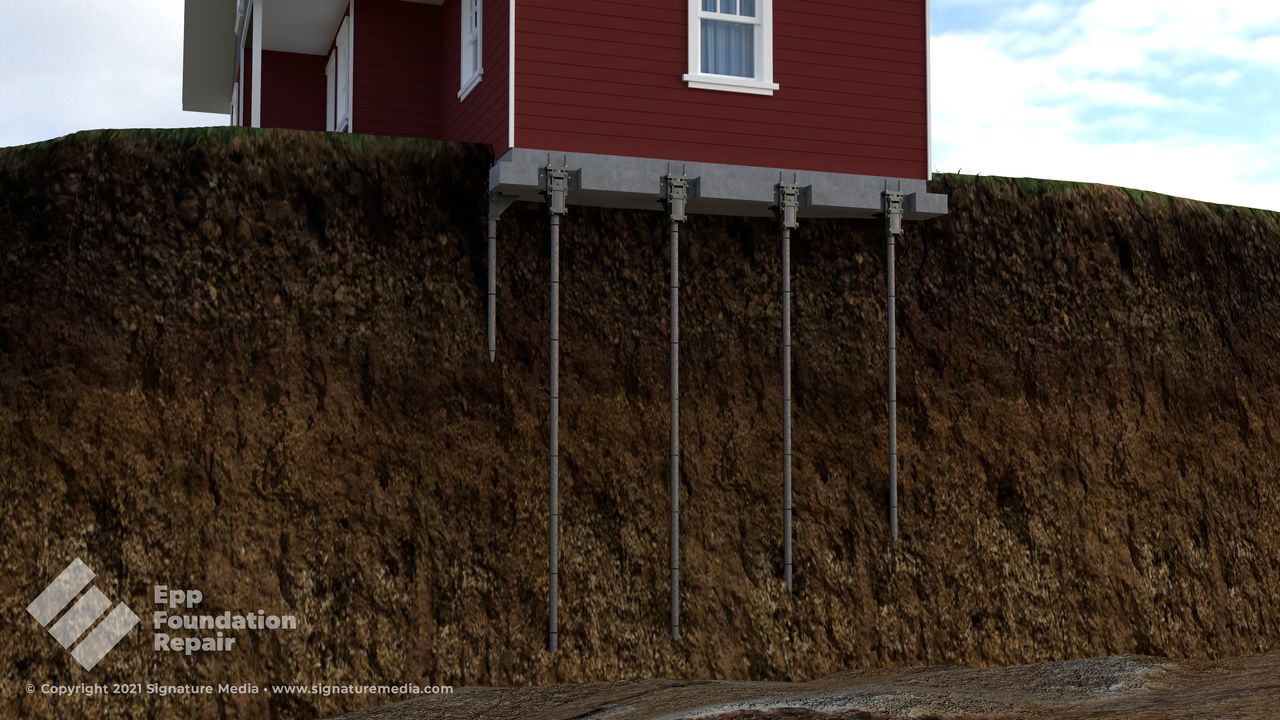Discovering Different Approaches of Structure Repair Service for Numerous Dirt Kinds
Foundation repair service is an important facet of keeping structural integrity, specifically when taking into consideration the varied obstacles postured by various soil kinds. The intricacy of dirt behavior under varying conditions demands a tailored technique to repair, ensuring optimal remedies such as helical piers for unpredictable dirts or chemical grouts for natural layers. The question continues to be: exactly how do we determine the most efficient approach for each distinct situation? Recognizing the interplay in between soil attributes and repair strategies is critical, yet there is more to uncover in the mission for lasting remedies. What elements absolutely determine the choice of technique?
Understanding Dirt Types
Soil types play a critical role in the stability and durability of building foundations, making it necessary for house owners and building and construction professionals to recognize their attributes and actions. The communication between soil and structure can establish the architectural integrity of a building. There are a number of dirt types, each with unique physical properties that impact just how structures are made and maintained.
Granular dirts, such as sand and crushed rock, supply excellent water drainage and are frequently taken into consideration steady. They have high load-bearing abilities, which can support larger structures. These soils can move if not compacted effectively, leading to prospective negotiation concerns. On the other hand, natural dirts like silts and clays show various behaviors. These dirts often tend to preserve moisture, and their load-bearing capacity can differ considerably with changes in moisture web content.
Rocky soils, known for their stamina and stability, deal superb support for foundations however might call for customized equipment for excavation. On the other hand, fertile dirts, which are a well balanced blend of clay, silt, and sand, commonly give positive problems for foundation support as a result of their modest water drainage properties.

Recognizing these dirt types is important for picking proper foundation repair service techniques, making certain the toughness and safety and security of frameworks with time.
Challenges With Large Clay
Amongst the various soil types, large clay presents one-of-a-kind challenges for structure stability due to its propensity to go through significant quantity changes with wetness variation. This sort of soil swells when wet and agreements when dry, which can put in substantial stress on frameworks. These changes can lead to foundation splitting, heaving, and settlement issues, presenting significant dangers to the structural honesty of buildings.
The challenges with expansive clay are intensified by its plasticity index, which measures the soil's ability to change shape and quantity. A high plasticity index indicates higher capacity for motion, boosting the likelihood of damage to structures. This is specifically bothersome in areas experiencing severe or frequent weather changes, where cycles of damp and dry problems are common.
Furthermore, the depth of large clay layers can differ, complicating the analysis and planning of ideal structure fixing techniques. These complexities call for a detailed geotechnical evaluation to make sure efficient structure repair approaches are executed, stressing the importance of dealing with expansive clay challenges with experience and care.
Solutions for Sandy Soils
Sandy dirts, defined by their huge fragment dimension and low communication, present distinctive difficulties for foundation stability as a result of their tendency for moving and disintegration. These properties necessitate specialized foundation repair methods to make sure architectural honesty. One reliable option is making use of deep foundation systems such as helical piers or driven stacks. By anchoring the structure to much deeper, more secure dirt layers, these systems can offer the required support to combat the changing nature of sandy soils.
Another advised method is the application of dirt stabilization approaches. Chemical grouting, as an click to investigate example, includes injecting a stabilizing agent right into the dirt, which improves communication and decreases leaks in the structure. This procedure aids to strengthen the sandy substratum, consequently reducing the danger of disintegration and activity.
Additionally, mounting correct drainage systems is crucial in sandy soil conditions. Ensuring sufficient drain can protect against water buildup around the structure, which often worsens disintegration and dirt displacement. Strategies such as French drains pipes or surface area grading can be utilized to route water away from the structure perimeter.
Addressing Working Out in Loamy Soils
Fertile soils, understood for their balanced mix of sand, clay, and silt, offer an abundant base for lots of frameworks however can occasionally result in structure settling due to their distinct structure. This balanced structure supplies outstanding drainage and nutrient retention, making it excellent for farming and landscaping. However, this same characteristic can become bothersome for foundations, as shifts in moisture web content can trigger the dirt to increase or agreement, causing clearing up.
Precise soil testing is important to identify the particular composition and moisture web content of the loam. As soon as data is gathered, implementing proper drainage solutions is essential to keep consistent moisture levels, consequently minimizing the danger of soil tightening or growth.

Innovative Repair Service Strategies
In the world of structure fixing, ingenious methods are consistently being established to attend to the complicated challenges postured by numerous dirt problems. As soil kinds differ dramatically in their structural properties, standard approaches may not constantly suffice. The introduction of brand-new technologies in foundation fixing provides extra tailored remedies, guaranteeing stability and durability.
One remarkable development is making use of helical piers, which are particularly efficient in extensive or unsteady dirts (foundation repair okc ok). These piers are screwed into the ground until they reach a secure layer of dirt, supplying solid assistance for the structure above. This technique decreases disruption and is adaptable to different dirt kinds, making it a functional solution
An additional cutting-edge technique is the application of polyurethane foam injection. click to find out more This method includes infusing high-density polyurethane foam below the foundation to fill up spaces and support the structure. It is a much less intrusive option to typical foundation, using fast installment with marginal disruption to the surrounding location.
Furthermore, dirt stabilization techniques, such as the use of chemical cements, have actually gotten traction. These substances improve dirt stamina and minimize leaks in the structure, protecting against future moving. Jointly, these ingenious repair service methods supply efficient options for the diverse challenges postured by differing soil conditions.
Conclusion

Structure repair work is a critical element of maintaining architectural honesty, especially when taking into consideration the diverse challenges postured by different dirt kinds (foundation repair oklahoma city ok). The complexity of soil habits under varying conditions demands a tailored method to fix, guaranteeing optimal options such as helical piers for unsteady dirts or chemical grouts for cohesive layers. By securing the structure to much deeper, a lot more stable soil layers, these systems can offer the necessary assistance to combat the shifting nature of sandy dirts
Structure repair needs mindful consideration of dirt types to make certain security and durability. Chemical grouts improve soil toughness and decrease permeability in natural soils.
Comments on “Crucial Guide to Foundation Repair OKC: What Homeowners Need to Know”